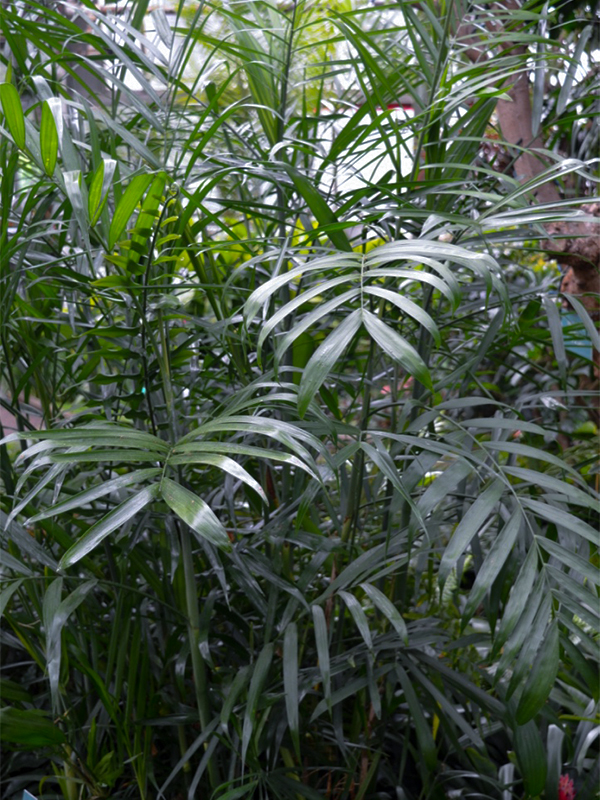| General Description | Relatively small and thin palm commonly used in malls, offices, homes, and courtyards. |
| Landscape | Useful as an indoor palm because of its adaptability to the environment, exotic look and anti-pollutant abilities. |
| Propagation | Usually propagated by seed, which takes 6-9 months to germinate. Can also use offsets. |
| Cultivation | Prefers bright indirect light or partial shade, with humid air and well-drained soil. Water thoroughly in the growing period, even letting a small amount of water to remain in the pot’s saucer. In winter, only water to make the soil barely moist. |
| Pests | Easy to keep disease free. Pests include mites, scale, mealybugs. |
| Notable Specimens | Centennial Conservatory, Thunder Bay, Ontario, Canada. |
| Habitat | Grows as an understory palm in rainforests. |
| Bark/Stem Description | Stems are densely clumped and resemble bamboo. |
| Leaf Description | Delicate and lace-like. Grows up to 60-90 cm long, with leaflets up to 38 cm long. |
| Flower Description | The flowers are produced in inflorescences. Male and female flowers are on separate plants. |
| Fruit Description | The fruit is drupe and 0.5 - 2 cm diameter. |
| Colour Description | Foliage is deep blue-green. Fruit is orange or red. |
